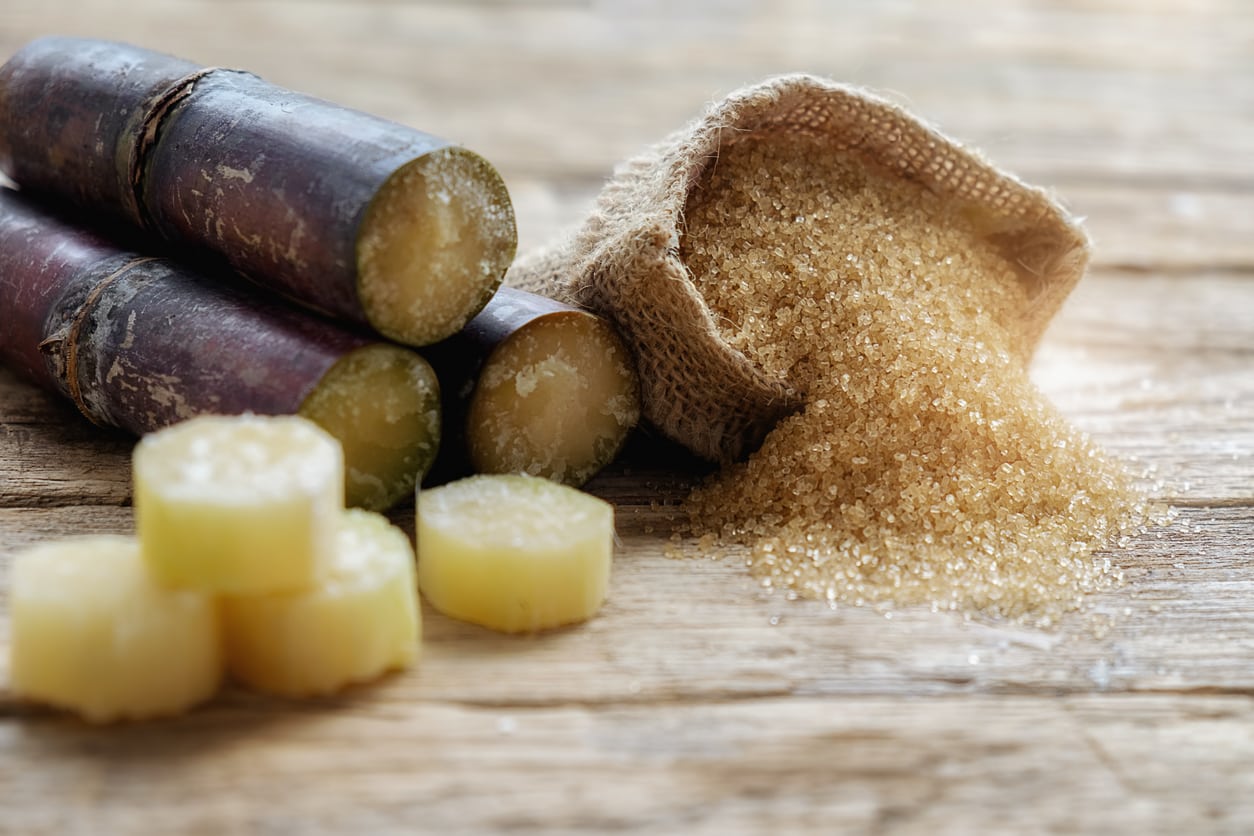How Sugar and Cane Affect Your Taste Buds and Cooking Experience
How Sugar and Cane Affect Your Taste Buds and Cooking Experience
Blog Article
How Cane Sugar Processing Chemicals Improve Sugar High Quality and Return
The duty of handling chemicals in walking cane sugar manufacturing is pivotal, as they directly influence both the quality and yield of the end product. By employing compounds such as lime and phosphoric acid, producers can successfully eliminate contaminations and boost removal effectiveness. In addition, the unification of turned on carbon and enzymes offers to maximize the failure of intricate sugars, inevitably resulting in a purer and higher-quality sugar. Nonetheless, the ins and outs of exactly how these chemicals communicate within the processing setting raise inquiries about their long-term ramifications and prospective improvements in the sector.
Introduction of Walking Stick Sugar Handling
Walking stick sugar handling includes a collection of important steps that change raw sugarcane into polished sugar products. The procedure starts with harvesting, where mature sugarcane stalks are reduced and carried to refining facilities. Upon arrival, the walking cane undergoes washing to get rid of contaminations such as soil and plant products.
Following cleaning, the cane is crushed to remove the juice, which has sucrose - sugar and cane. This juice goes through explanation, where lime and heat are utilized to get rid of staying contaminations and non-sugar components. The cleared up juice is after that vaporized to concentrate the sugar web content, resulting in the development of thick syrup
Following, the syrup is taken shape via a controlled cooling process, resulting in sugar crystals. To accomplish polished sugar, additional filtration actions are used, consisting of cleaning, re-crystallization, and drying out.
The last product is either packaged as raw sugar or even more processed into white sugar, accommodating different consumer and industrial requirements. This detailed collection of actions makes certain the manufacturing of high-quality sugar, important for various applications in food and beverage industries.
Key Processing Chemicals Used
The manufacturing of polished cane sugar depends on numerous processing chemicals that play substantial roles at different phases. This step is essential for boosting the general high quality of the removed juice.
Phosphoric acid serves a dual objective; it enhances the clarification procedure and assists in the elimination of color-forming substances, contributing to a greater purity of the final item. Furthermore, sulfur dioxide functions as a lightening agent, enabling the reliable removal of undesirable pigments and improving the shade of the sugar.
Other notable chemicals consist of triggered carbon, which is used for additional decolorization, and enzymes that facilitate the malfunction of complex sugars right into simpler types, thus enhancing yield. The cautious selection and application of these processing chemicals are crucial for enhancing the efficiency of sugar extraction and refining procedures, ultimately causing a more constant and better sugar item.

Effect On Sugar High Quality
Just how do handling chemicals affect the top quality of polished sugar? The intro of numerous chemicals in the walking cane sugar handling stage substantially boosts the purity and overall quality of the final item.
Additionally, making use of triggered carbon and ion-exchange materials during the refining process plays a vital function in removing off-flavors and undesirable smells, adding to the sugar's sensory account. This improvement not just elevates the organoleptic and visual high qualities however also improves the service life by decreasing microbial task related to pollutants.
On top of that, the specific application of these chemicals makes certain that the sugar displays a constant grain size and flowability, which are crucial characteristics for both commercial applications and customer preferences. Overall, the critical use processing chemicals is essential in accomplishing premium refined sugar that fulfills market criteria and customer expectations.

Enhancing Return Effectiveness
Enhancing return performance in cane sugar processing entails optimizing various stages of manufacturing to make the most of the amount of sugar removed from raw cane. One important element is the option and application of appropriate processing chemicals, which can assist in the failure of cell walls and enhance sugar release during removal. Chemicals such as acids and enzymes play an essential role in this process by hydrolyzing polysaccharides and dissolving pollutants, thus enhancing the total extraction effectiveness.

Normal monitoring and change of processing criteria are important to maintain performance throughout production (sugar and cane). By using these techniques, sugar manufacturers can not only boost the quantity of sugar acquired yet likewise lower waste and lower manufacturing costs, adding to an extra sustainable and successful sugar handling operation
Benefits for Customers and producers
Cane sugar processing chemicals use substantial advantages for both consumers and producers, producing a much more reliable and lasting market. For producers, Find Out More these chemicals improve removal procedures, bring about greater returns and boosted sugar quality. By optimizing the purification and crystallization phases, they lower waste and rise total performance, which can significantly lower production costs. This efficiency permits manufacturers to continue to be affordable in an international market identified by fluctuating rates and need.
The better top quality of sugar translates to far better preference and uniformity in food products. Furthermore, the usage of processing chemicals can lead to an extra steady supply of sugar, minimizing lacks and cost spikes that can happen due to environmental aspects or market fluctuations.
Final Thought

The function of processing chemicals in walking cane sugar manufacturing is critical, as they straight influence both the top quality and yield of the final product (sugar and cane). The unification of triggered carbon and enzymes serves to maximize the Continued break down of complex sugars, inevitably leading to a purer and higher-quality sugar.Cane sugar handling includes a collection of important actions that transform raw sugarcane into refined sugar items.Enhancing yield efficiency in walking stick sugar processing includes optimizing different stages of production to take full advantage of the amount of sugar drawn out from raw cane.Walking stick sugar handling chemicals play a critical role in boosting both sugar quality and return
Report this page